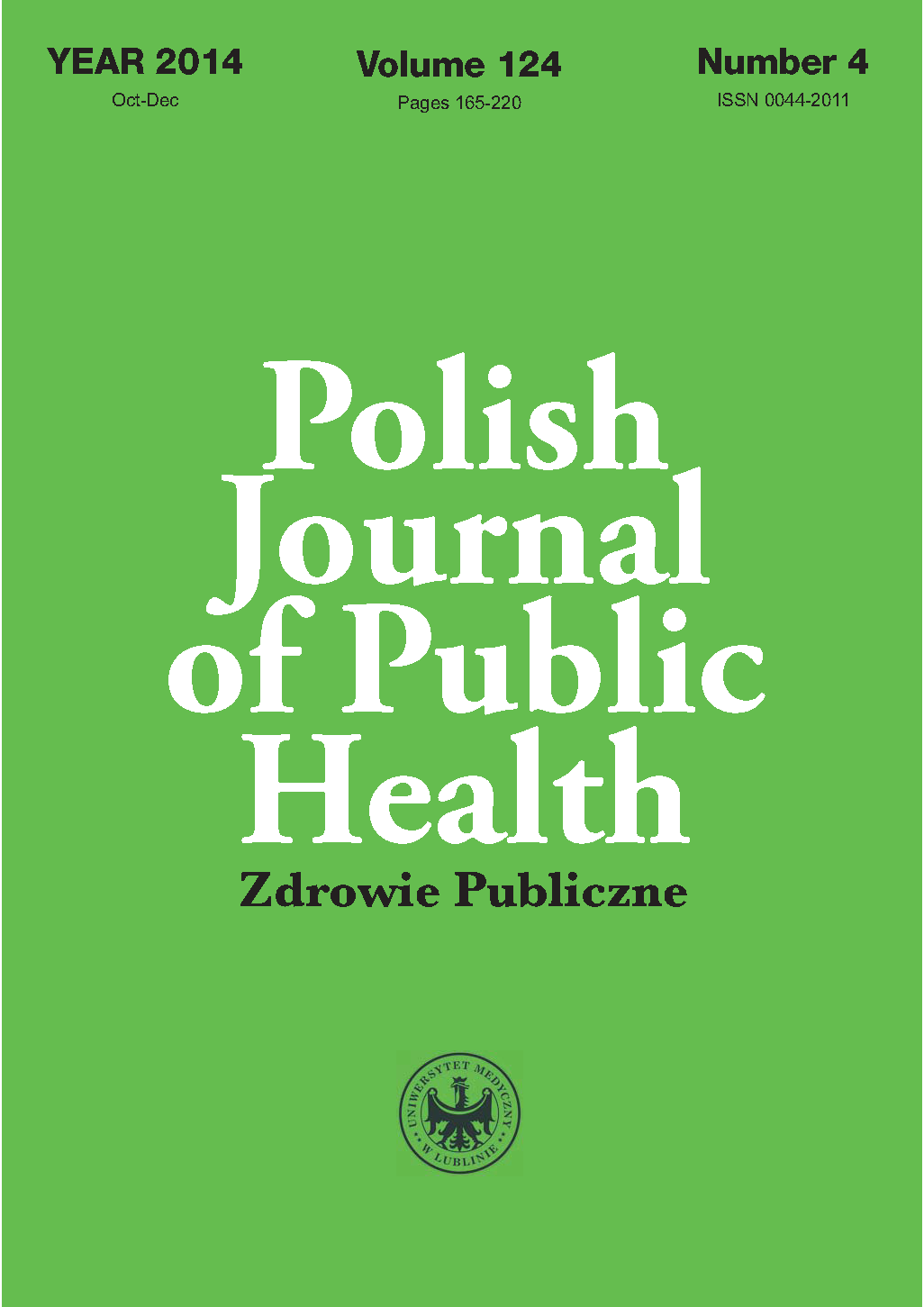The influence of nursing care on pregnancy and labour
DOI:
https://doi.org/10.1515/pjph-2015-0007Keywords:
pregnancy, childbirth, nursing careAbstract
Introduction. Performance management is a crucial concept in the broader field of human resource management. In accordance with its principles, in defining a professional role, its aim must be included. In addition, key results areas and crucial competencies must be stated. The professional role of a nurse with regard to pregnancy and pre-natal care, is defined by way of the set of functions fulfilled. The role of a midwife and her competencies are, however, in this situation, much broader.
Aim. The aim of the conducted research was to determine the roles played by both nursing and midwifery staff in ensuring a healthy pregnancy and delivery by way of their patients’ assessment.
Material and methods. The research was conducted in the Obstetrics and Gynaecology unit, in the Regional Specialist Hospital in Biała Podlaska, and it involved 40 pregnant women.
Results and discussion. Our study reveals that what the subject women need the most from the nursing and midwifery staff, is emotional support. What is more, the dominant majority connects their expectations as to the fulfilment of the roles played by nursing and midwifery staff to an increase in information support.
Conclusion. The obtained results allow a defining of the aim of the professional roles of nurses and midwives in supporting and assisting the pregnant, as well as identifying their key results areas and crucial competencies from the patients’ point of view. In comparing our own study results to that involving patients’ opinions (gained by way of a study conducted in the obstetrics and gynaecology unit, by the quality care assessment section of the Regional Specialist Hospital in Biała Podlaska), it can be stated that there is continuous positive growth in the quality of service provided by nurses and midwives.
References
1. Armstrong M. Zarządzanie zasobami ludzkimi. Kraków: Oficyna Ekonomiczna; 2001.
2. Wrońska I. Determinanty rozwoju pielęgniarstwa. In: B. Ślusarska, D. Zarzycka, K. Zahradniczek (ed). Podstawy Pielęgniarstwa. Lublin: Wydawnictwo Czelej; 2004. p. 36-45.
3. Poznańska S. Pielęgniarka w opiece nad zdrowiem. In: K. Zahradniczek (ed). Pielęgniarstwo. Warszawa: Wydawnictwo Lekarskie PZWL; 2006. p. 39-56.
4. Widomska-Czekajska T, Górajek-Jóźwik J. Encyklopedia dla pielęgniarek i położnych. Warszawa: Wydawnictwo Lekarskie PZWL; 2010.
5. Ciechaniewicz W. Pielęgniarstwo ćwiczenia. Warszawa: Wydawnictwo Lekarskie PZWL; 2007.
6. Widomska-Czekajska T, Górajek-Jóźwik J. Przewodnik Encyklopedyczny dla Pielęgniarek. Warszawa: Wydawnictwo Lekarskie PZWL; 1996.
7. Ustawa z dn. 15 lipca 2011 r. o zawodach pielęgniarki i położnej, Dz. U. nr 174, poz. 1039 z późn. zm.
8. Kodeks Etyki Zawodowej pielęgniarki i położnej Rzeczypospolitej Polski z dn. 9 grudnia 2003 r., przyjęty uchwałą nr 9 na IV Krajowym Zjeździe Pielęgniarek i Położnych.
9. Łepecka-Klusek G. Pielęgniarstwo we współczesnym położnictwie i ginekologii. Lublin: Wydawnictwo Czelej; 2003.


